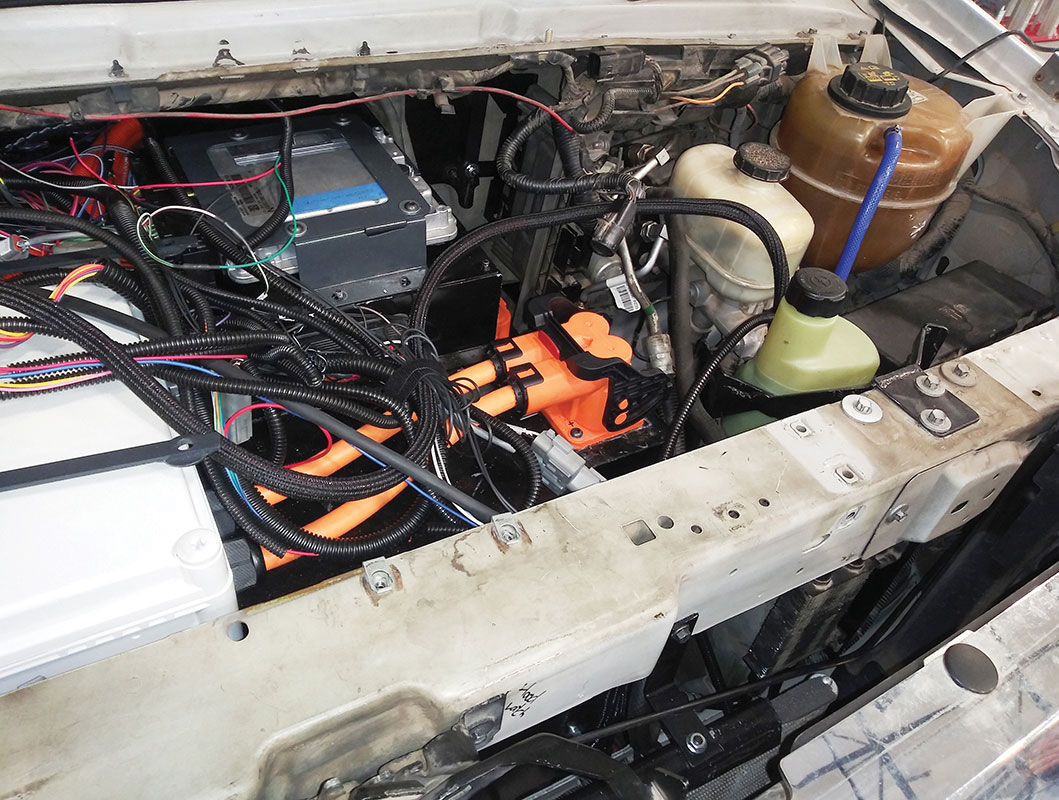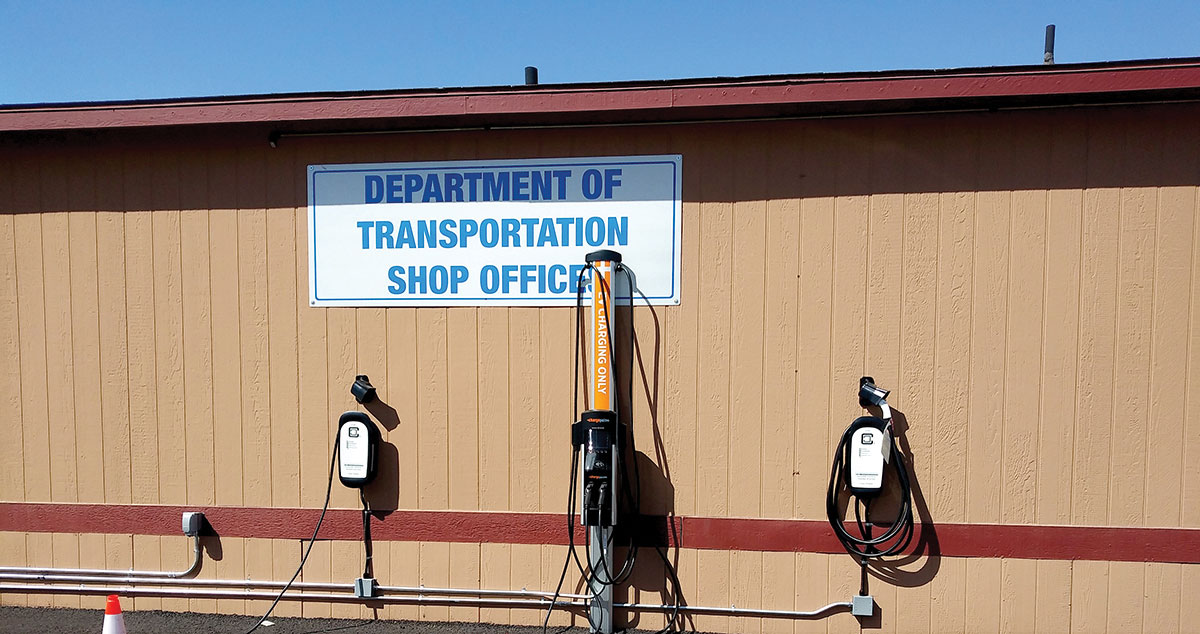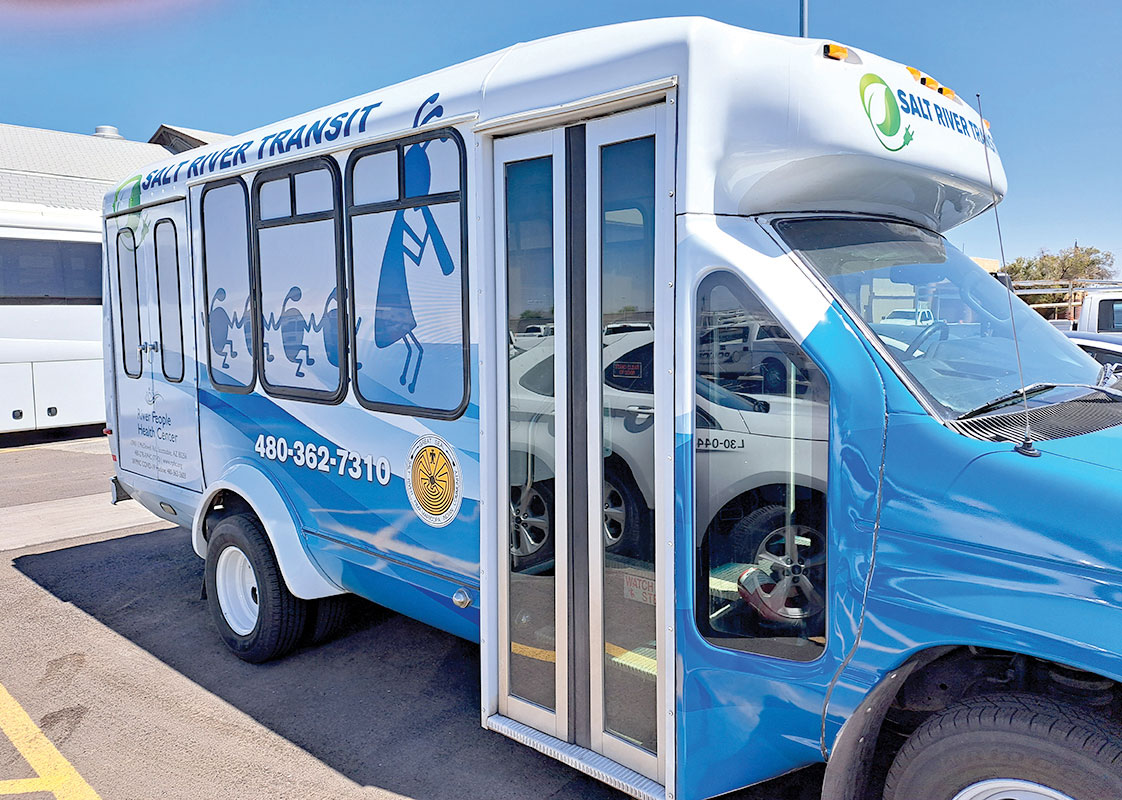VIEWS: 1433
December 1, 2022Community Honored for Fleet Electric Vehicle Conversions
In November, Salt River Project (SRP) named the Salt River Pima-Maricopa Indian Community a 2022 Champion of Sustainability in the category of Growing Sustainable Communities due to the hard work and dedication of the Community’s Department of Transportation (DOT) toward improved energy efficiency and sustainability in the tribal vehicle fleet.
In 2021, SRPMIC’s DOT was granted more than $600,000 from the federal Low or No Emission Vehicle Program, which the Community used to purchase two Ford electric buses and chargers. But due to supply-chain issues, the two new buses could not be delivered. That didn’t stop them from moving forward, however; they decided to convert an existing transit vehicle.

DOT Fleet Vehicle Specialist Tonya Glass spent time during the pandemic educating herself about how fleets operate with electric vehicles and what it takes to transition from gas-powered to electric vehicles.
“I’ve worked with local municipalities, governments across the country and local stakeholders,” said Glass, “to educate myself and develop a road map for the Community to transition to electric vehicles. We took a transit vehicle that we currently had—it had over 196,000 miles and was 12 years old, and we called it ‘the Beast.’ We’ve embarked on a pilot program with a local vendor that [converts gas] vehicles to electric, and we had the opportunity to meet and engage with other partners such as SRP and Arizona State University.”
Although supply-chain issues made it hard to purchase another electric vehicle, DOT Assistant Transportation Director Franklin Kauakahi was able to obtain new vehicles, a Ford Mustang Mach-E and a Tesla, from a local dealership.
The DOT currently is utilizing these vehicles in the Community and collecting data about how the vehicles ride and how many miles they can travel with each battery charge. This data will be analyzed to help determine which SRPMIC departments would most benefit from electric vehicles, what routes the vehicles should take through the Community, and other policies and procedures.

“The data collection on the [converted bus] was important, because we figured out that the air conditioner wasn’t working right”, explained Glass. The transition to the conversion bus allowed DOT to train their drivers and figure out which routes worked and didn’t work. The conversion bus’s current daily route is to and from the River People Health Center and the Phoenix Indian Medical Center.
“This conversion vehicle has helped us train our drivers and automotive services staff regarding what to look out for and [how to] repair when there are issues with the vehicle,” said Glass. “Two volunteers from our auto shop have decided to be the subject-matter experts for electric vehicles and have gone through training and received certification.”
The Community DOT needs staff trained in the operation and repair of electric vehicles because the next step is to transition to electric heavy equipment.
“We may apply for a grant to receive and operate electric school buses in the Community,” Glass said. Additionally, DOT is working with SRP, Public Works, and Engineering and Construction Services to identify and install the necessary infrastructure.
“The [vehicles] are the easy part; the electricity is the part that is cumbersome and costly and needs more mindful attention because of the placement [of charging stations],” said Glass. “If we as a Community don’t get this right, it could be worse than [using] gas [vehicles] because of the cost of electricity.”
The DOT is in the exploratory stage of learning to transition gas vehicles in the tribal fleet to electric after they reach 10 years old or 100,000 miles.
There are two electric vehicle charging stations at the DOT office. An additional 17 charging stations have been installed at the River People Health Center.







